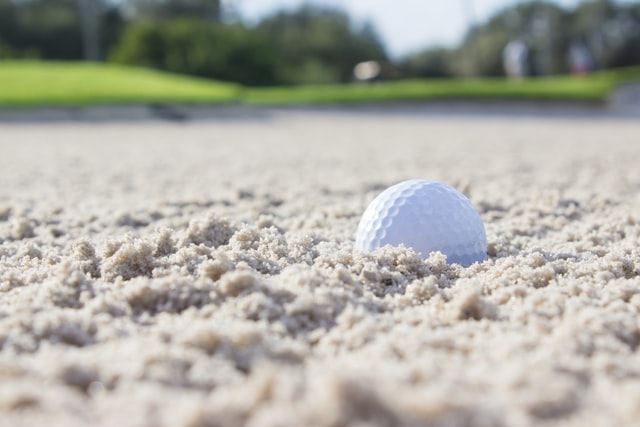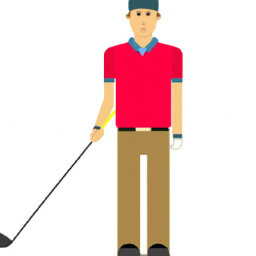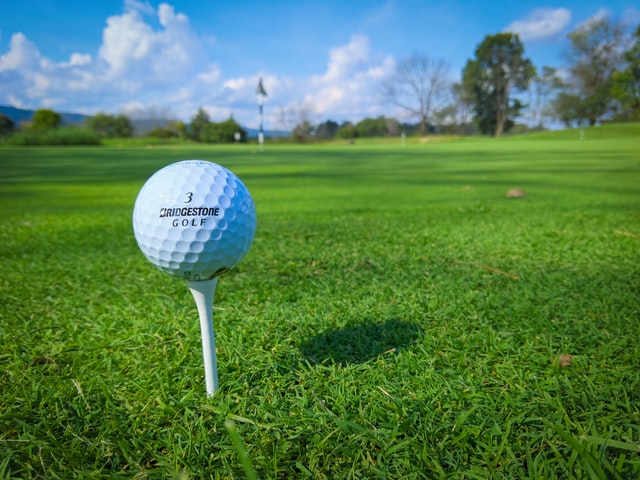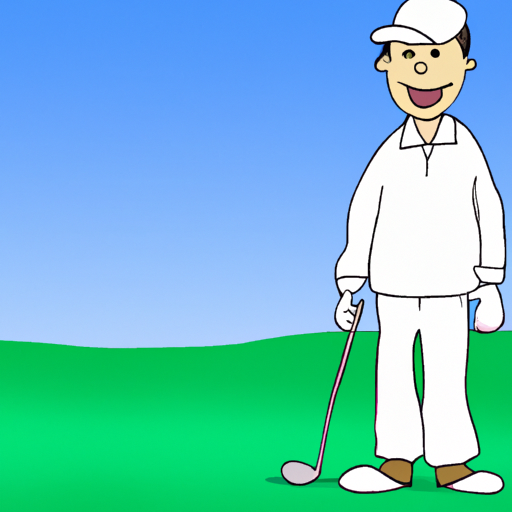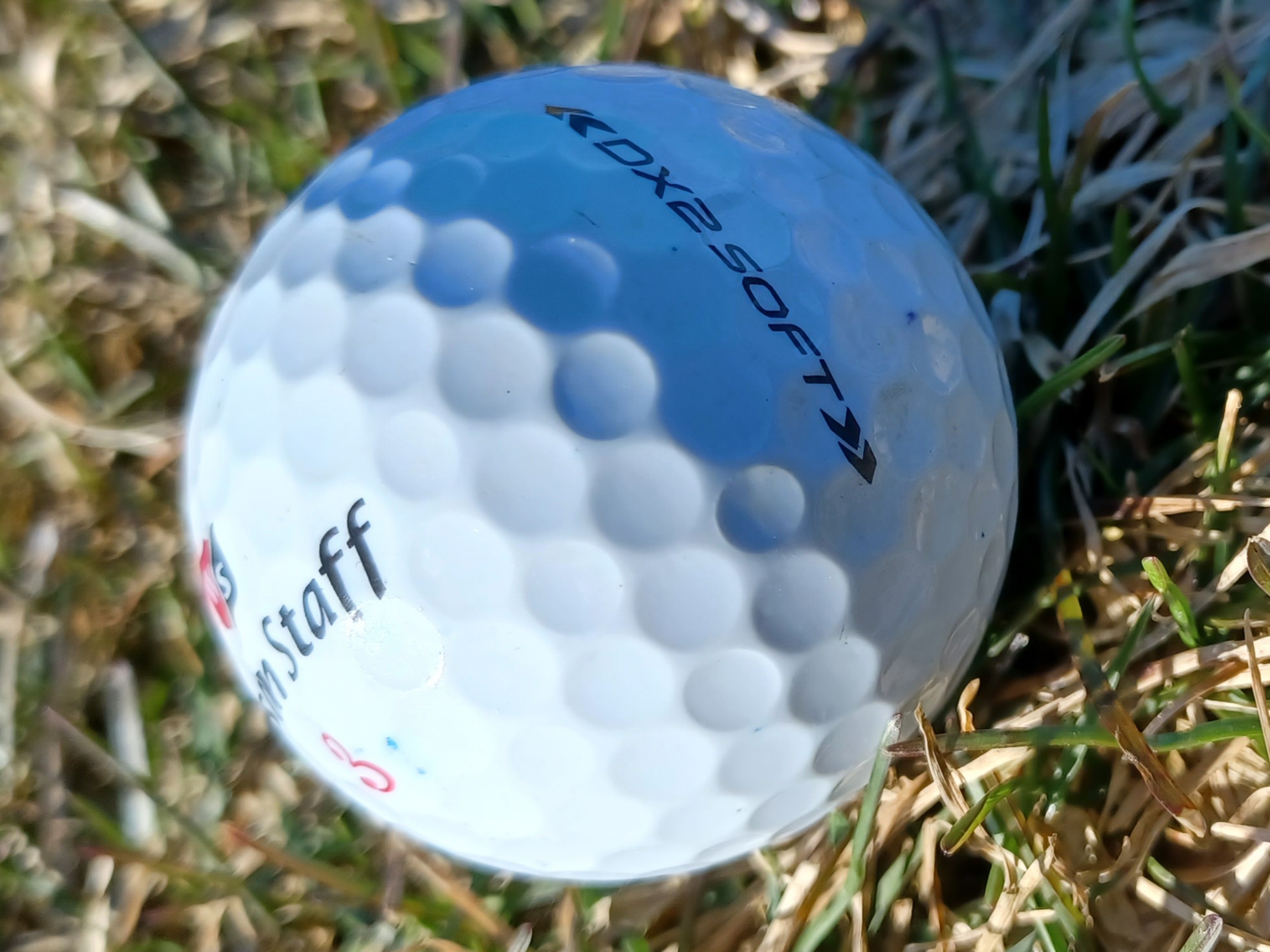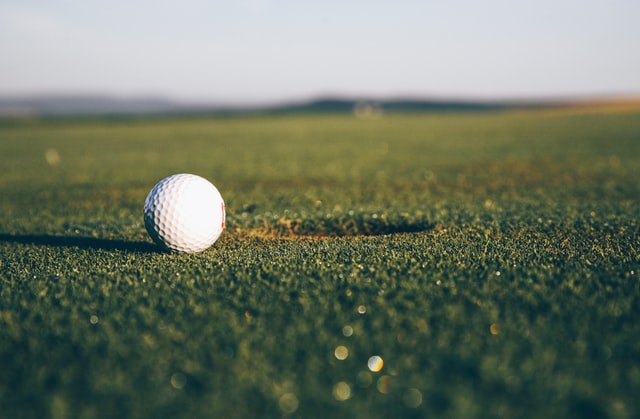- Home
- Equipment
- Golf Balls
- Why Golf Ball Dimples
Unlocking the Secrets of Golf Ball Dimples: Enhancing Your Game
Have you ever wondered why golf balls have dimples? These tiny indentations are not just for aesthetic appeal; they hold the key to transforming your golf game. In this comprehensive guide, we delve into the science behind golf ball dimples and how they drastically improve your game's dynamics. From reducing drag to enhancing lift, these dimples play a pivotal role in your shot's trajectory and distance. Whether you're a seasoned pro or a budding enthusiast, understanding the impact of these dimples will elevate your game. Don't miss our key takeaways and the FAQ section for quick insights if you're on the go. Join us on this intriguing journey to uncover the secrets of why golf ball dimples are a game-changer on the course!
Have you ever wondered why those tiny dimples on a golf ball are so crucial? As a golfer, understanding the nuances of your equipment can be a game-changer. The mystery behind these dimples is not just a matter of design but a significant factor affecting your game's outcome.
I remember the first time I held a golf ball, turning it over in my hand, intrigued by its unique texture. It was a moment of curiosity that led me down a path of discovery. Like many, I initially overlooked the importance of these dimples, focusing more on my swing and stance. However, as I delved deeper into the world of golf, I realized that these small indentations were more than just aesthetic features; they were the key to unlocking a golf ball's true potential.
In this comprehensive guide, we'll explore the fascinating world of golf ball dimples. From their impact on flight dynamics to their role in golf ball design, we'll uncover the secrets that make these dimples a critical element in enhancing your golfing experience. Whether you're a seasoned pro or a beginner, understanding the science behind golf ball dimples will not only satisfy your curiosity but also give you an edge in your game.
 Experience the Flight: The Dynamic Impact of Golf Ball Dimples
Experience the Flight: The Dynamic Impact of Golf Ball DimplesUnraveling the Mystery: The Flight of a Dimpled Golf Ball
As someone who's spent countless hours on the golf course, I've always been fascinated by how small changes can significantly impact the game. Let's dive into the intriguing world of golf ball dimples and their effect on flight.
The Initial Curiosity
I remember the first time I noticed how differently golf balls behaved compared to smooth-surfaced balls. It was during a casual game with friends when I realized that these dimples must be doing something extraordinary.
The Science Behind the Flight
1. Reducing Air Resistance: Dimples on a golf ball create turbulence in the air around the ball. This turbulence reduces the drag, allowing the ball to fly farther and faster than a smooth ball.
2. Enhancing Lift: The dimples also help in generating lift. They do this by affecting the airflow patterns, which in turn, helps the ball stay in the air longer.
3. Consistency in Trajectory: The dimples ensure a more consistent and predictable flight path, crucial for accuracy in golf.
The Game-Changing Discovery
I recall a tournament where I switched to a ball with a different dimple pattern. The change in my drives was noticeable. The ball flew straighter and longer, helping me shave off a few strokes from my game. It was a clear demonstration of how dimple design can influence performance.
Dimples and Weather Conditions
- In Windy Conditions: The dimples help maintain stability, ensuring the ball doesn't veer off course easily.
- In Wet Conditions: They also aid in reducing the impact of water on the ball's flight.
The Evolution of Dimple Design
1. Early Days: Initially, golf balls were smooth; it was only after noticing improved performance in older, nicked balls that dimples were introduced.
2. Modern Innovations: Today, the design and pattern of dimples are a result of extensive research and development, with each design aiming to optimize flight characteristics.
Understanding the role of dimples in a golf ball's flight is not just about appreciating the technology; it's about leveraging this knowledge to enhance your game. Every time I hit the course, I'm reminded of the subtle yet profound impact these small indentations have on every shot.
 Design Perfection: How Dimples Define the Golf Ball's Journey
Design Perfection: How Dimples Define the Golf Ball's JourneyDecoding the Dimple Count: Customizing Your Golf Game
As an avid golfer, I've always been intrigued by the various aspects of golf equipment, especially the seemingly minor details that can have a major impact on performance. Today, let's explore why golf balls have different numbers of dimples and how this affects your game.
The Quest for the Perfect Dimple Count
It was during a golf equipment expo that I first became curious about the varying dimple counts on golf balls. I remember asking experts and delving into research to understand this better.
The Role of Dimple Count in Ball Performance
1. Flight Distance and Speed: The number of dimples on a golf ball can influence its flight distance and speed. More dimples typically mean a smoother air flow, which can translate to longer flights.
2. Trajectory and Stability: The dimple count also affects the trajectory and stability of the ball. Different counts can lead to varying flight patterns, which are crucial in different playing conditions.
Experimenting with Dimple Counts
I once played a series of rounds using balls with different dimple counts. The experience was eye-opening. Some balls offered more control, while others provided extra distance. It was a practical lesson in how dimple variations can cater to different playing styles and conditions.
Dimple Count and Environmental Factors
- In Calm Conditions: A higher dimple count can provide a more stable and predictable flight.
- In Windy Conditions: Balls with fewer dimples might offer better control against the wind.
The Science Behind the Numbers
1. Optimization: Manufacturers experiment with different dimple counts to optimize aerodynamic properties for specific playing conditions.
2. Customization: The dimple count allows for customization of balls for different skill levels and preferences.
The Evolution of Dimple Technology
- Early Experiments: The journey from smooth balls to the current sophisticated dimple designs reflects the evolution of golf ball technology.
- Today's Innovations: Modern golf balls are the result of extensive aerodynamic research, with each dimple count designed to offer specific benefits.
The number of dimples on a golf ball is more than just a design aspect; it's a critical factor that can be tailored to enhance your playing style. Whether you're a beginner or a seasoned pro, understanding and choosing the right dimple count can make a significant difference in your game.
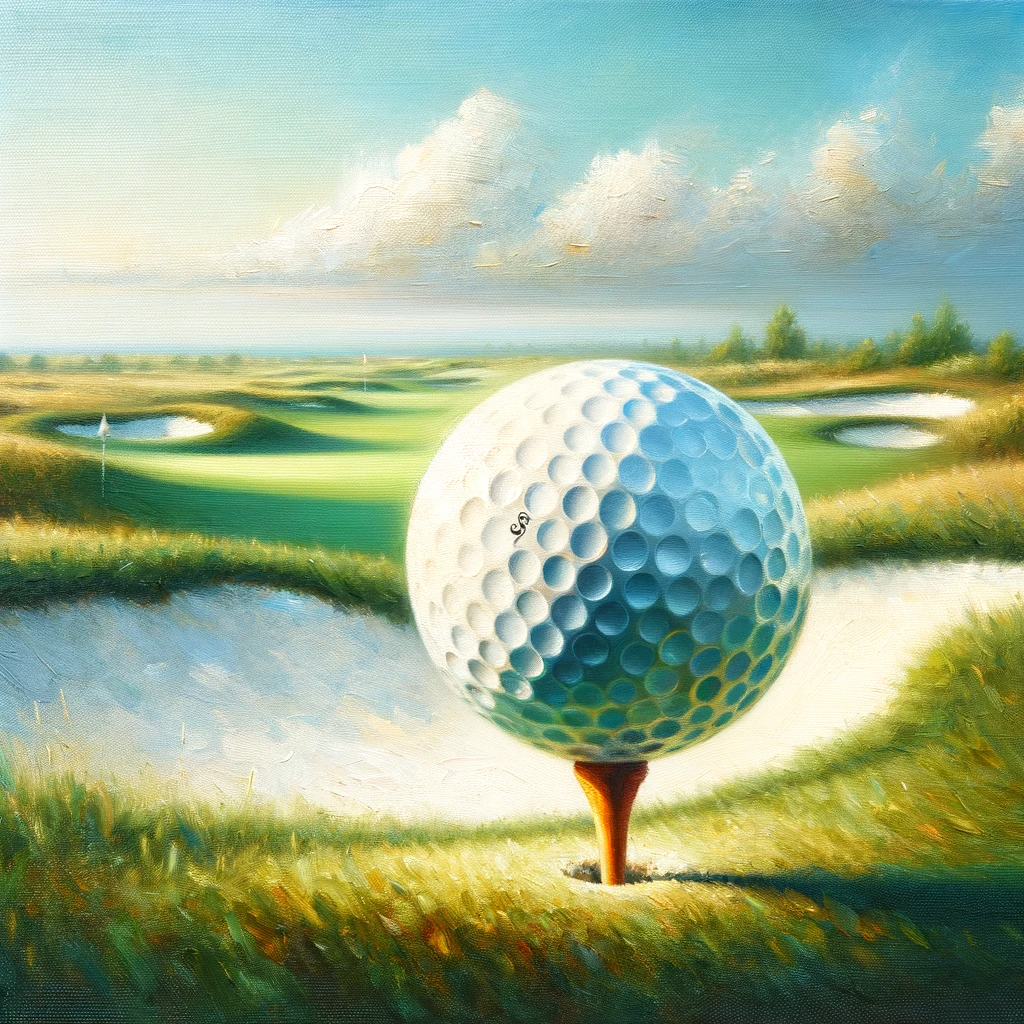 Aerodynamic Mastery: The Art and Science of Golf Ball Dimples
Aerodynamic Mastery: The Art and Science of Golf Ball DimplesHow Do Dimples on Golf Balls Affect Spin?
As someone who has spent countless hours on the golf course, I've always been fascinated by the science behind the game, particularly how the tiny dimples on a golf ball can significantly affect its spin. Let's dive into this intriguing aspect.
The Science of Spin: Dimples and Aerodynamics
The journey to understanding golf ball spin began for me during a casual conversation with a seasoned golf instructor. His insights into the aerodynamics of golf balls sparked my curiosity.
Dimples and Their Role in Creating Spin
1. Creating Turbulence: Dimples on a golf ball create turbulence in the air around the ball, which is essential for generating spin.
2. Control and Precision: The spin imparted by dimples allows for greater control and precision in shots, a fact I learned through practice and observation.
Mastering Spin with Different Balls
I recall practicing with various golf balls, each with a unique dimple design. It was a practical experiment in how different dimple patterns can influence the spin and, consequently, the flight and landing of the ball.
Dimple Design and Spin Types
- Backspin: Dimples can enhance backspin, which is crucial for shots that require the ball to stop quickly upon landing.
- Sidespin: The right dimple design can also affect sidespin, impacting the ball's flight path and accuracy.
The Art of Choosing the Right Dimple Design
1. Skill Level Consideration: Beginners might prefer balls with dimple designs that promote straighter flights, while advanced players may opt for designs that offer more spin control.
2. Playing Conditions: The choice of dimple design can also depend on playing conditions, such as wind and course layout.
Evolution of Dimple Patterns for Optimal Spin
- Historical Perspective: The evolution of dimple patterns over the years reflects the ongoing quest for the perfect balance between distance and control.
- Modern Innovations: Today's golf balls are a testament to advanced research in aerodynamics, offering players a range of options to suit their spin preferences.
The dimples on a golf ball are a marvel of engineering, intricately designed to affect the ball's spin in ways that can dramatically influence your game. Understanding and choosing the right dimple design can be a game-changer, offering an edge in control and precision that every golfer seeks.
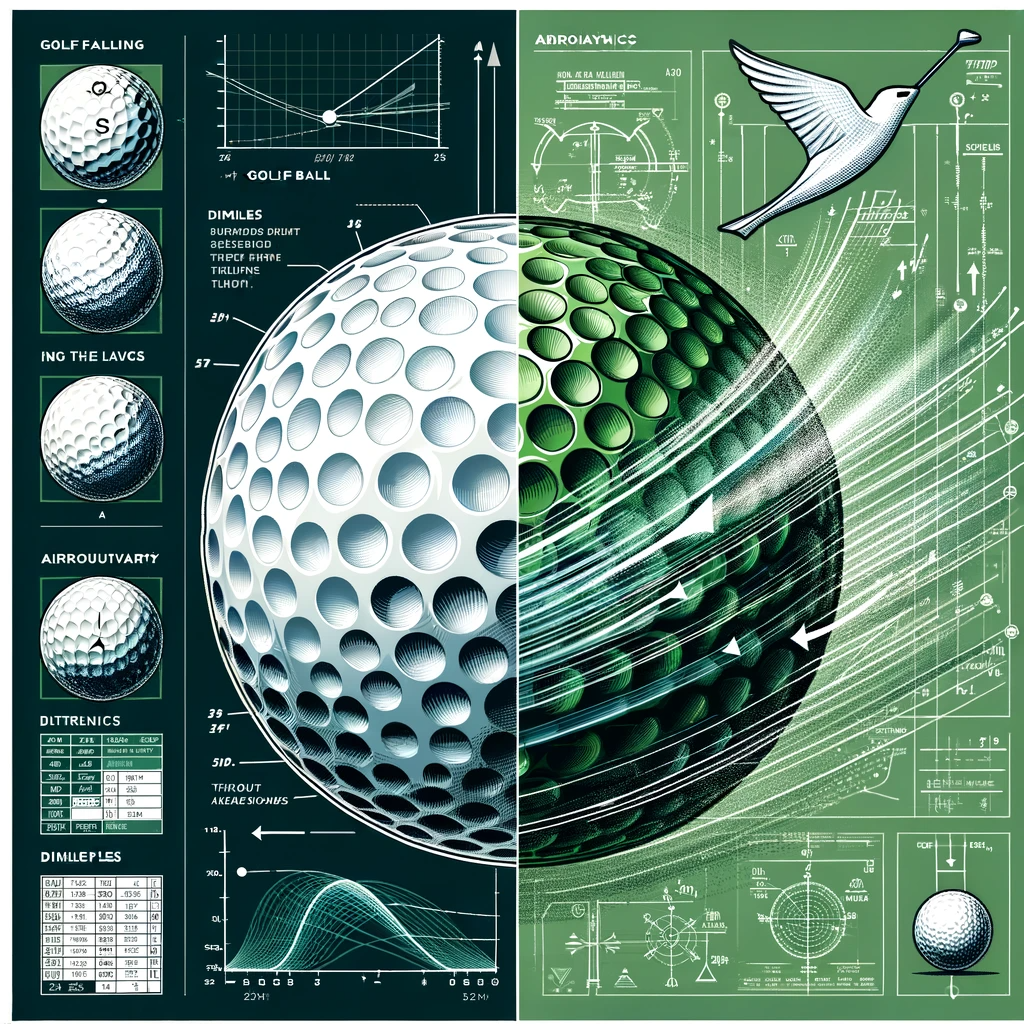 Evolution of Excellence: Tracing the History of Golf Ball Dimples
Evolution of Excellence: Tracing the History of Golf Ball DimplesKey Takeaway: The Fascinating World of Golf Ball Dimples
As we've explored the intricate world of golf ball dimples, it's clear that these small features play a massive role in the game of golf. Here's a quick recap and some actions you can take to enhance your golfing experience:
Understanding Golf Ball Dimples: A Summary
1. Aerodynamics and Distance: Dimples reduce drag and increase lift, allowing the ball to travel further.
2. Impact on Flight Path: The pattern and depth of dimples influence the ball's trajectory and stability.
3. Spin and Control: Dimples play a crucial role in how the ball spins, affecting control and precision.
Dive Deeper into the World of Golf Ball Dimples
- Experiment with Different Balls: Try playing with various dimpled golf balls to see how they affect your game.
- Join the Golfeaser Community: Share your experiences and learn from fellow golf enthusiasts.
- Sign Up for Our Newsletter: Stay updated with the latest insights and tips in golf technology.
- Live by the Golfeaser Manifesto: Embrace the spirit of continuous improvement and passion for golf.
Engage and Share Your Story
We at Golfeaser are more than just a community; we're a family of golf enthusiasts eager to hear your stories. How have golf ball dimples changed your game? What discoveries have you made on the course? Share your experiences with us and become a part of our growing community.
Keep the Conversation Going
Have you ever wondered how changing your golf ball can transform your game? Or perhaps you have a unique story about how golf ball dimples have impacted your performance? Share your thoughts and questions with us, and let's keep the conversation going!
Remember, every dimple on your golf ball carries a story of physics, innovation, and passion. It's not just about playing golf; it's about understanding and appreciating the science that makes this game so fascinating. Join us at Golfeaser, and let's explore this amazing journey together! 🏌️♂️💬🌟
FAQ: Understanding the Science Behind Golf Ball Dimples
What Are Golf Ball Dimples and Why Are They Important?
What Are Golf Ball Dimples and Why Are They Important?
Golf ball dimples are small indentations on the surface of a golf ball. They play a crucial role in reducing drag and improving the ball's aerodynamic properties. By creating turbulence in the airflow around the ball, dimples help the air cling to the ball's surface longer, reducing drag and allowing the ball to travel farther.
How Do Dimples on a Golf Ball Affect Its Flight?
How Do Dimples on a Golf Ball Affect Its Flight?
The dimples on a golf ball create turbulent airflow, which reduces the drag force acting on the ball. This results in a more stable and longer flight path. The turbulent flow created by the dimples helps to keep the air close to the ball's surface, preventing air separation and minimizing resistance.
What Is the Difference Between Laminar and Turbulent Flow in Golf Ball Aerodynamics?
What Is the Difference Between Laminar and Turbulent Flow in Golf Ball Aerodynamics?
In golf ball aerodynamics, laminar flow refers to a smooth airflow with less drag but higher susceptibility to separation. Turbulent flow, on the other hand, initially creates more drag but is less prone to air separation. Dimples on a golf ball induce turbulent flow, which is more effective at high speeds, keeping the airflow attached to the ball longer and enhancing its flight.
How Many Dimples Are Typically Found on a Golf Ball, and Does the Number Matter?
How Many Dimples Are Typically Found on a Golf Ball, and Does the Number Matter?
The number of dimples on a golf ball can vary, typically ranging from 300 to 500. The exact number and pattern of dimples can affect the ball's aerodynamic properties, including lift and drag. Manufacturers experiment with different dimple designs to optimize the ball's performance.
Can the Shape and Depth of Golf Ball Dimples Affect Performance?
Can the Shape and Depth of Golf Ball Dimples Affect Performance?
Yes, the shape and depth of golf ball dimples can significantly impact the ball's aerodynamics. Different shapes and depths can alter the way air flows around the ball, affecting its stability, lift, and drag. Manufacturers often experiment with various dimple designs to enhance performance.
Why Did Golf Balls Evolve to Have Dimples Instead of a Smooth Surface?
Why Did Golf Balls Evolve to Have Dimples Instead of a Smooth Surface?
Golf balls evolved to have dimples because it was observed that older, scuffed balls performed better than new, smooth ones. Dimples were introduced to mimic this effect, improving the aerodynamics of the ball. The dimpled design helps to reduce drag and increase lift, allowing the ball to travel farther.
How Does Turbulent Flow Created by Dimples Benefit a Golf Ball Compared to Laminar Flow?
How Does Turbulent Flow Created by Dimples Benefit a Golf Ball Compared to Laminar Flow?
Turbulent flow, created by the dimples on a golf ball, benefits the ball by reducing the likelihood of air separation. This type of flow creates more initial drag but maintains a closer and more consistent airflow around the ball, leading to reduced overall drag and a more stable flight path compared to laminar flow.
Are There Different Types of Dimple Patterns, and How Do They Affect the Ball's Flight?
Are There Different Types of Dimple Patterns, and How Do They Affect the Ball's Flight?
Yes, there are various dimple patterns used on golf balls, each affecting the ball's flight differently. These patterns can influence the ball's lift, drag, and stability. Manufacturers design different dimple patterns to optimize specific aspects of performance, such as distance, control, or consistency in flight.
How Has Golf Ball Dimple Design Evolved Over Time?
How Has Golf Ball Dimple Design Evolved Over Time?
Golf ball dimple design has evolved significantly over time, with advancements in technology and aerodynamics. Early golf balls had irregular patterns and fewer dimples. Modern designs utilize precise patterns and varying dimple sizes and depths, all aimed at optimizing the ball's aerodynamic properties for better performance.
What Role Does Science Play in the Design of Golf Ball Dimples?
What Role Does Science Play in the Design of Golf Ball Dimples?
Science plays a crucial role in the design of golf ball dimples. Aerodynamics, physics, and materials science are all integral to understanding how dimples affect a ball's flight. Manufacturers use scientific principles and testing to develop dimple patterns that enhance performance, stability, and distance.

